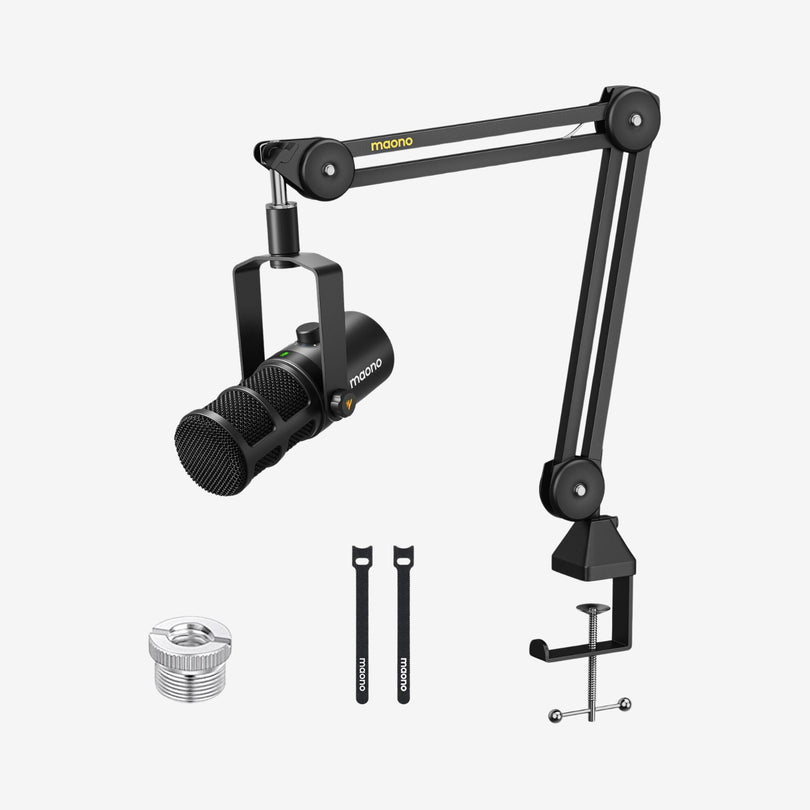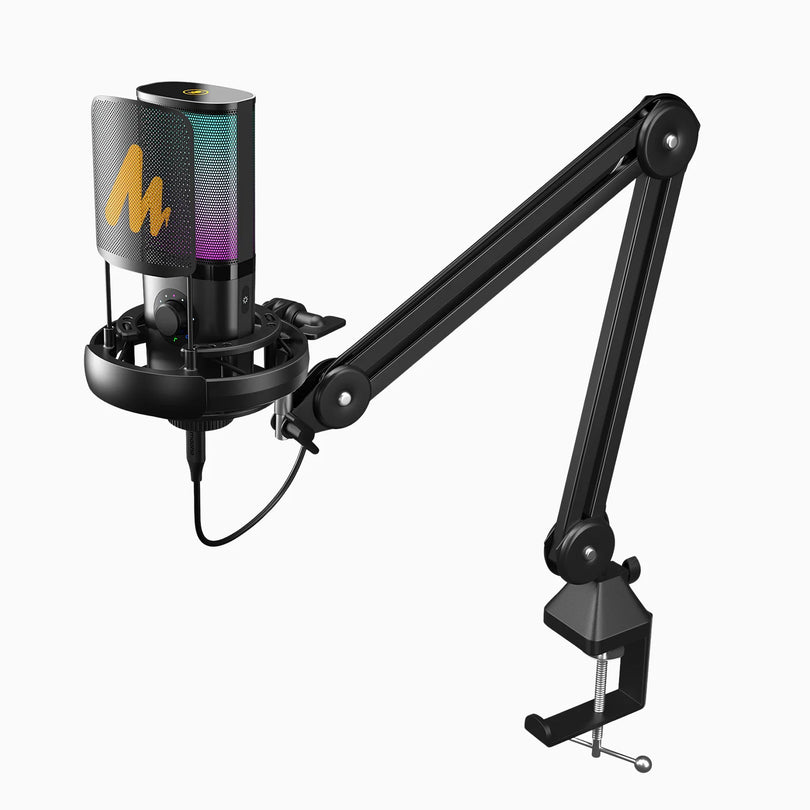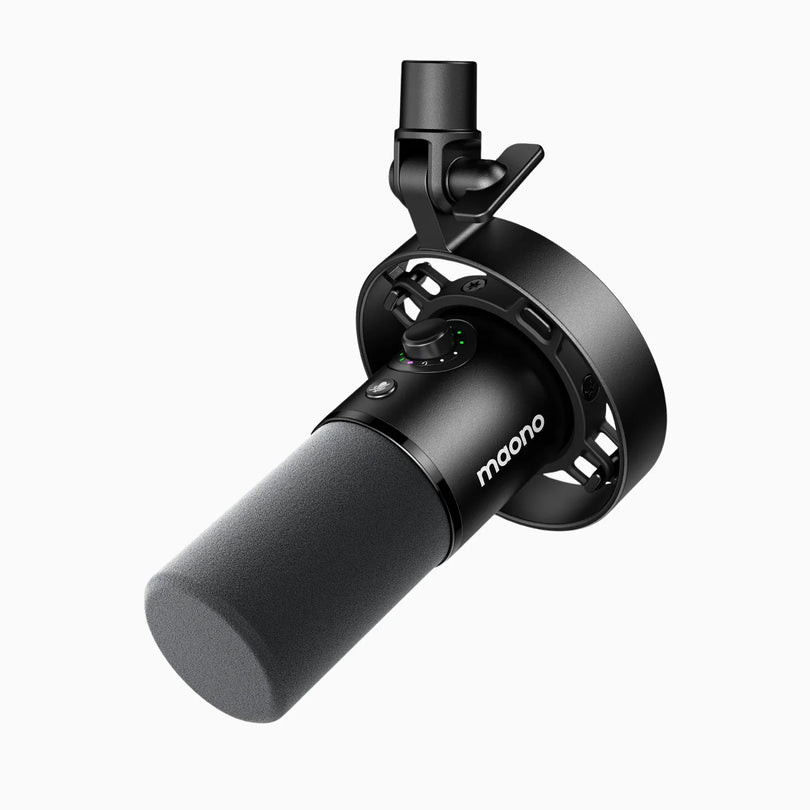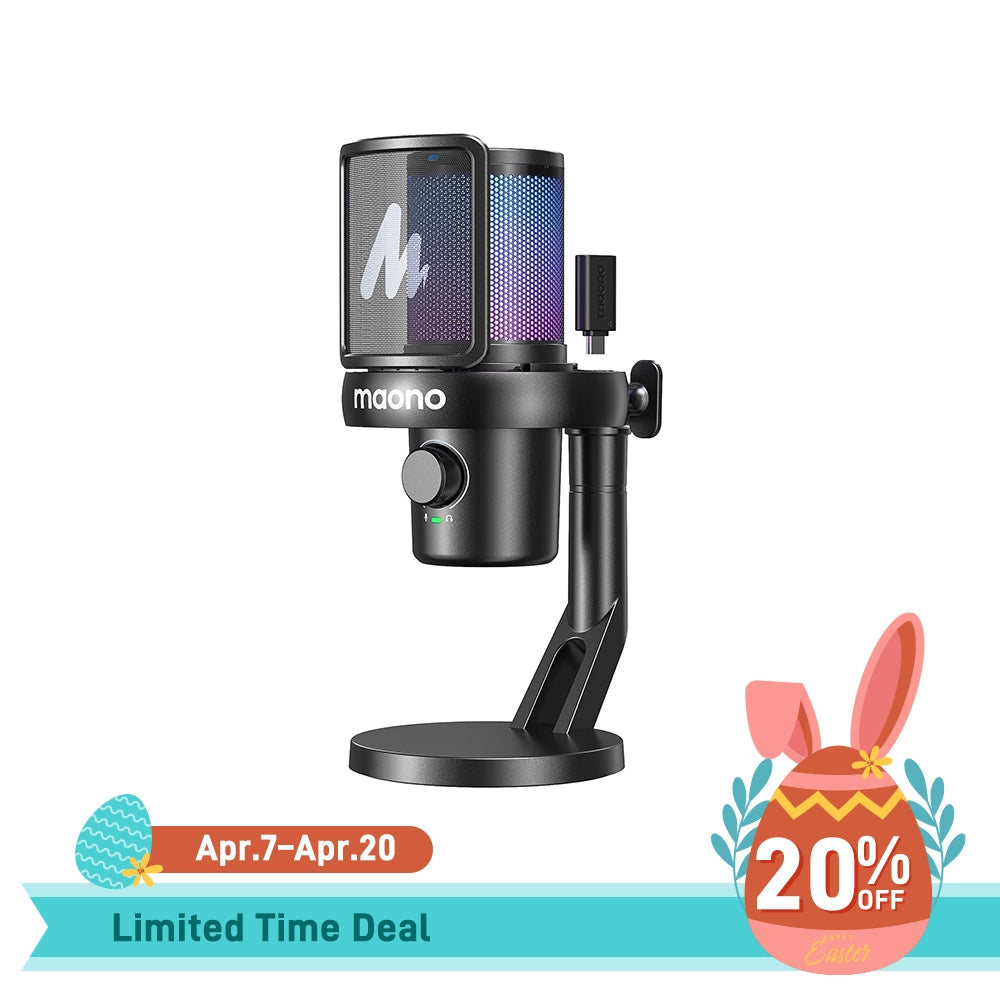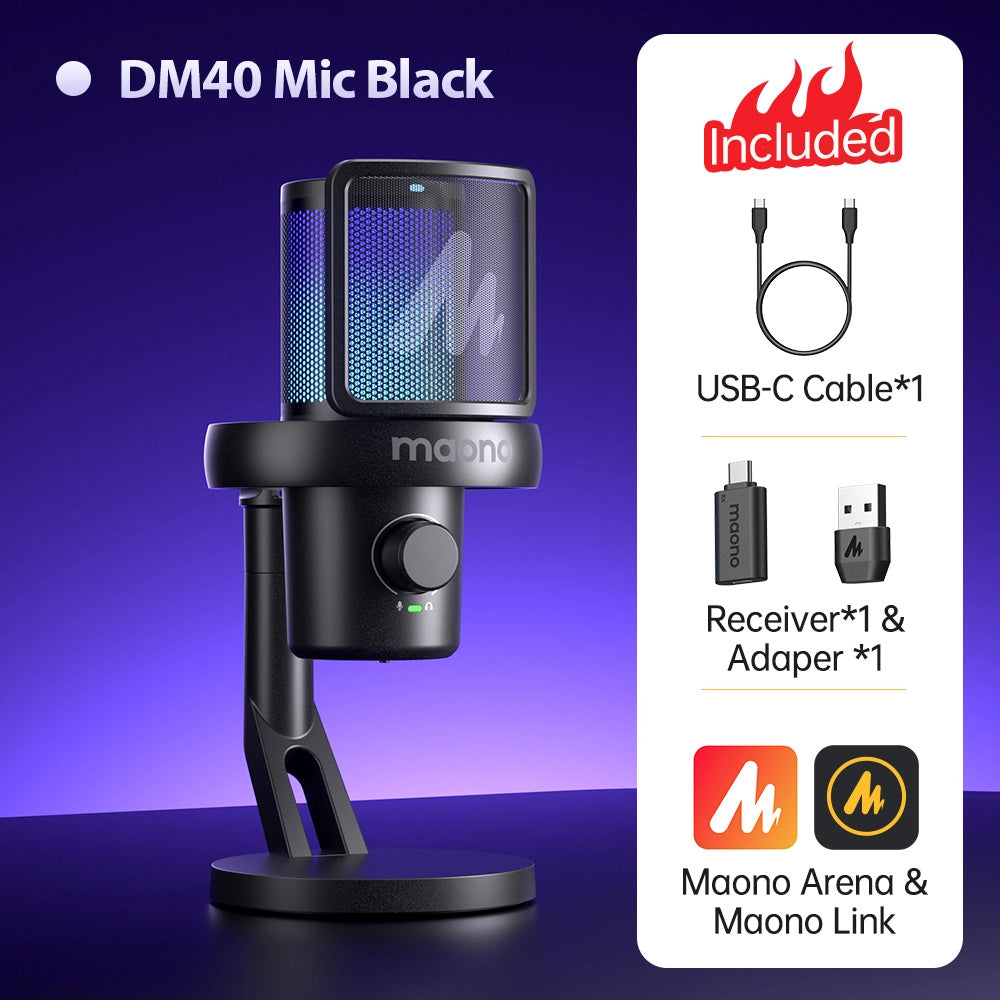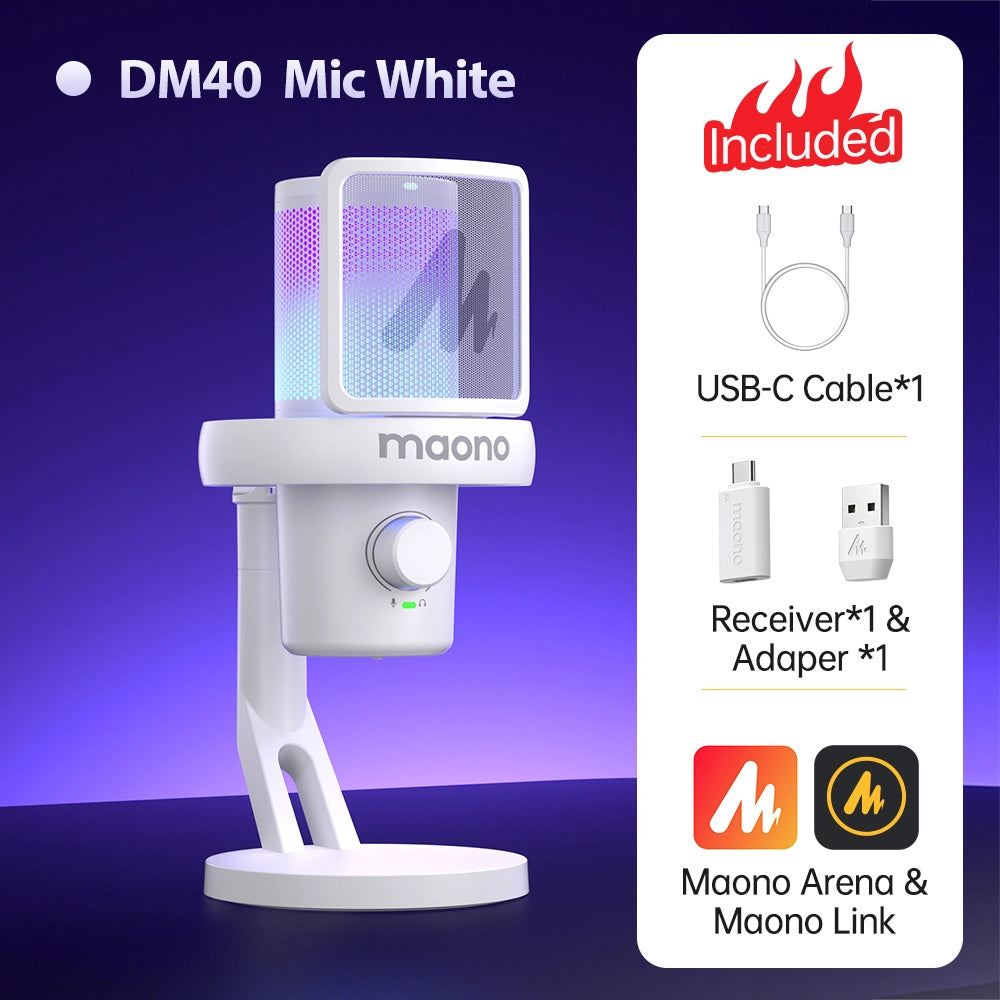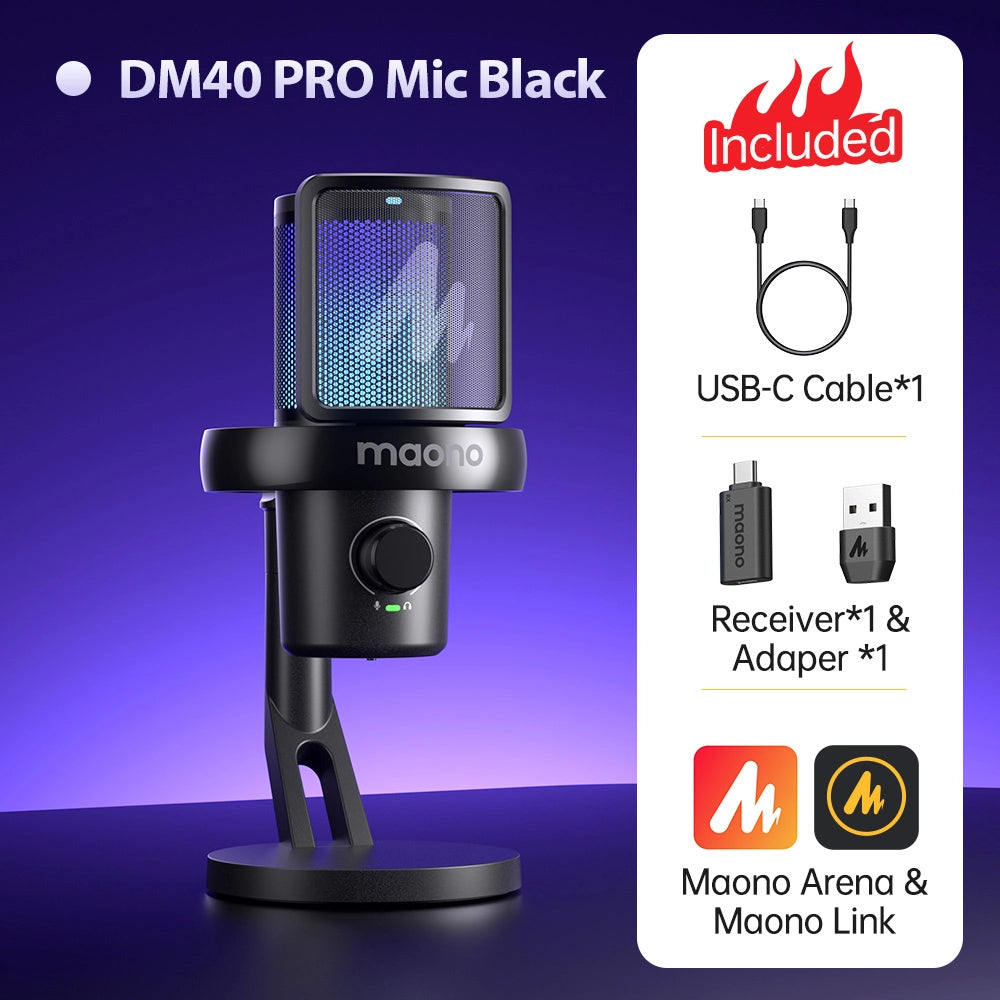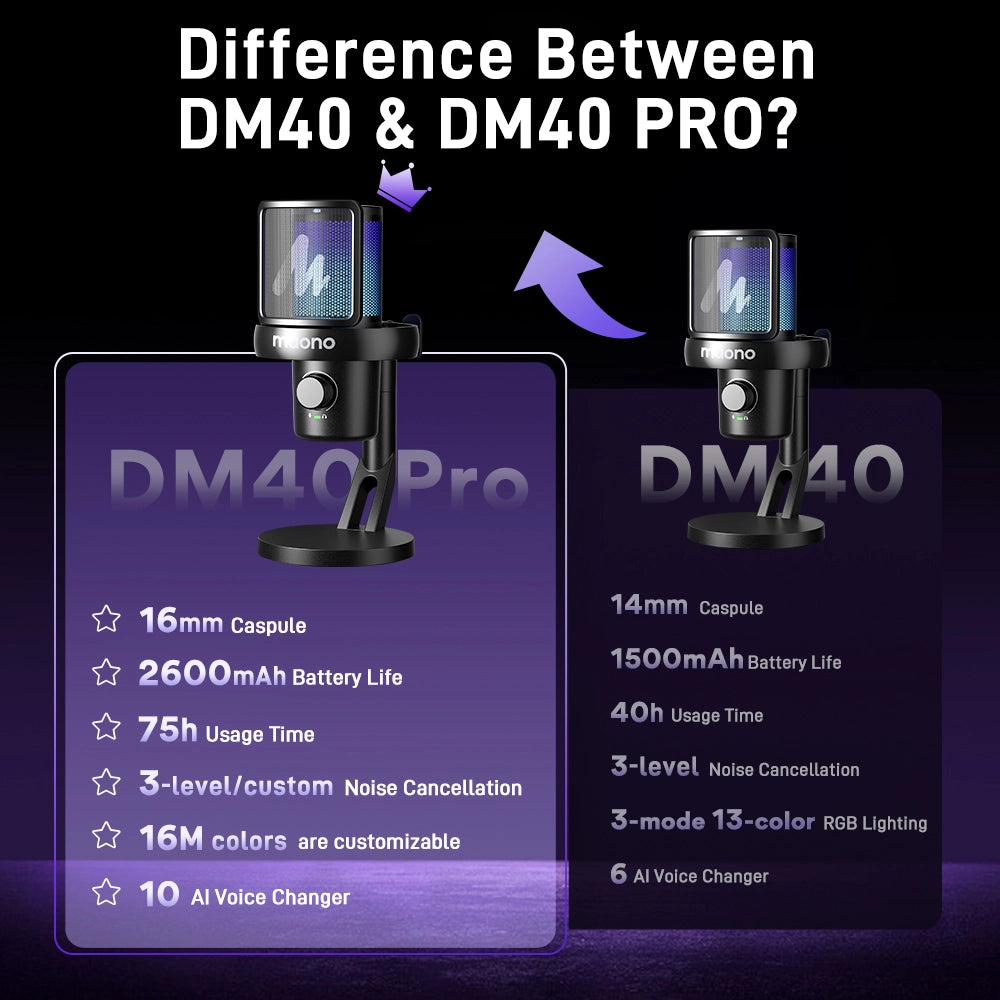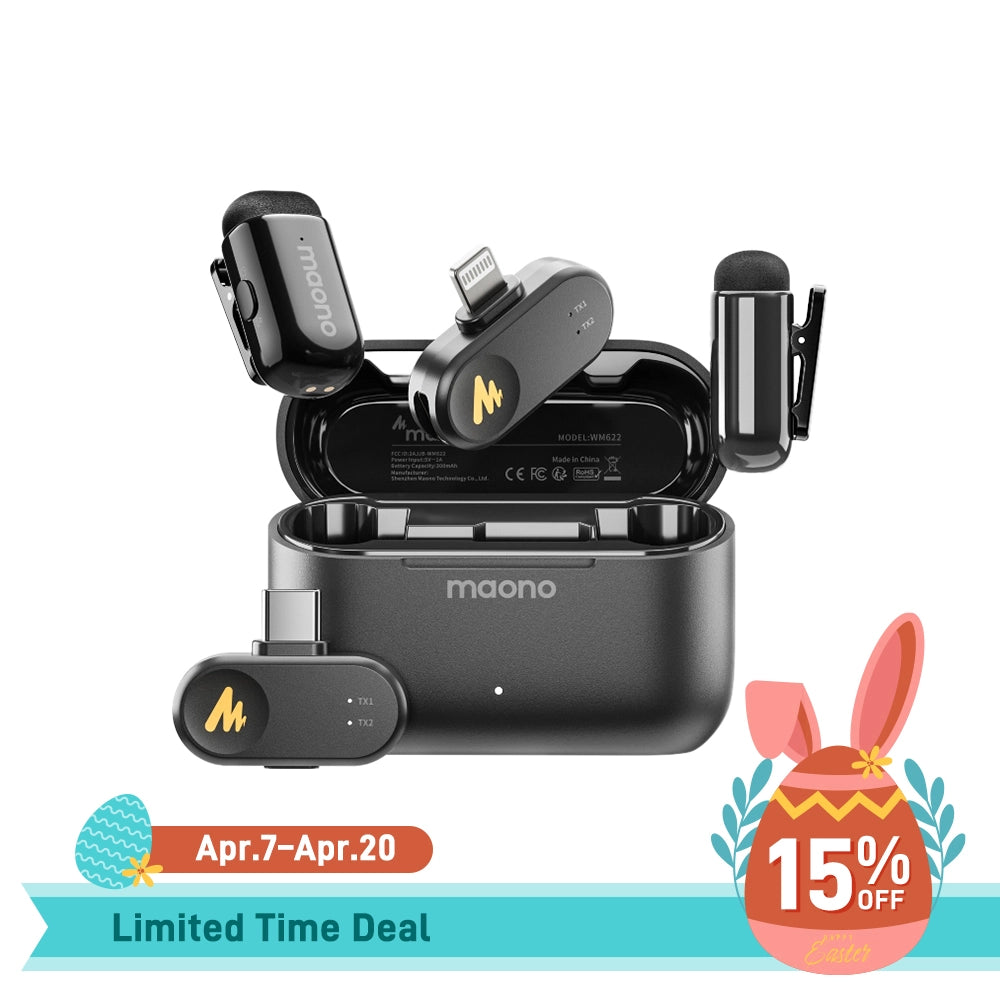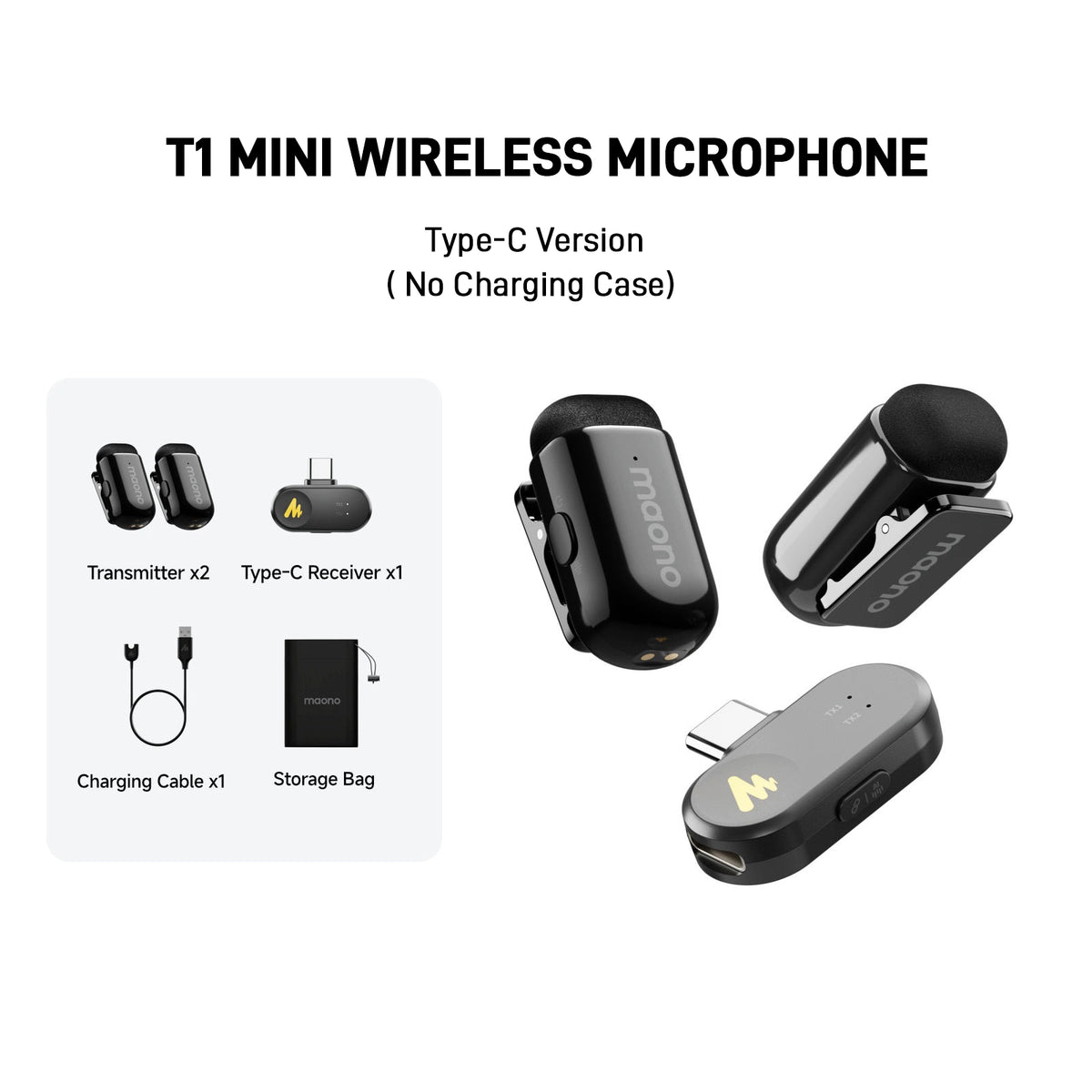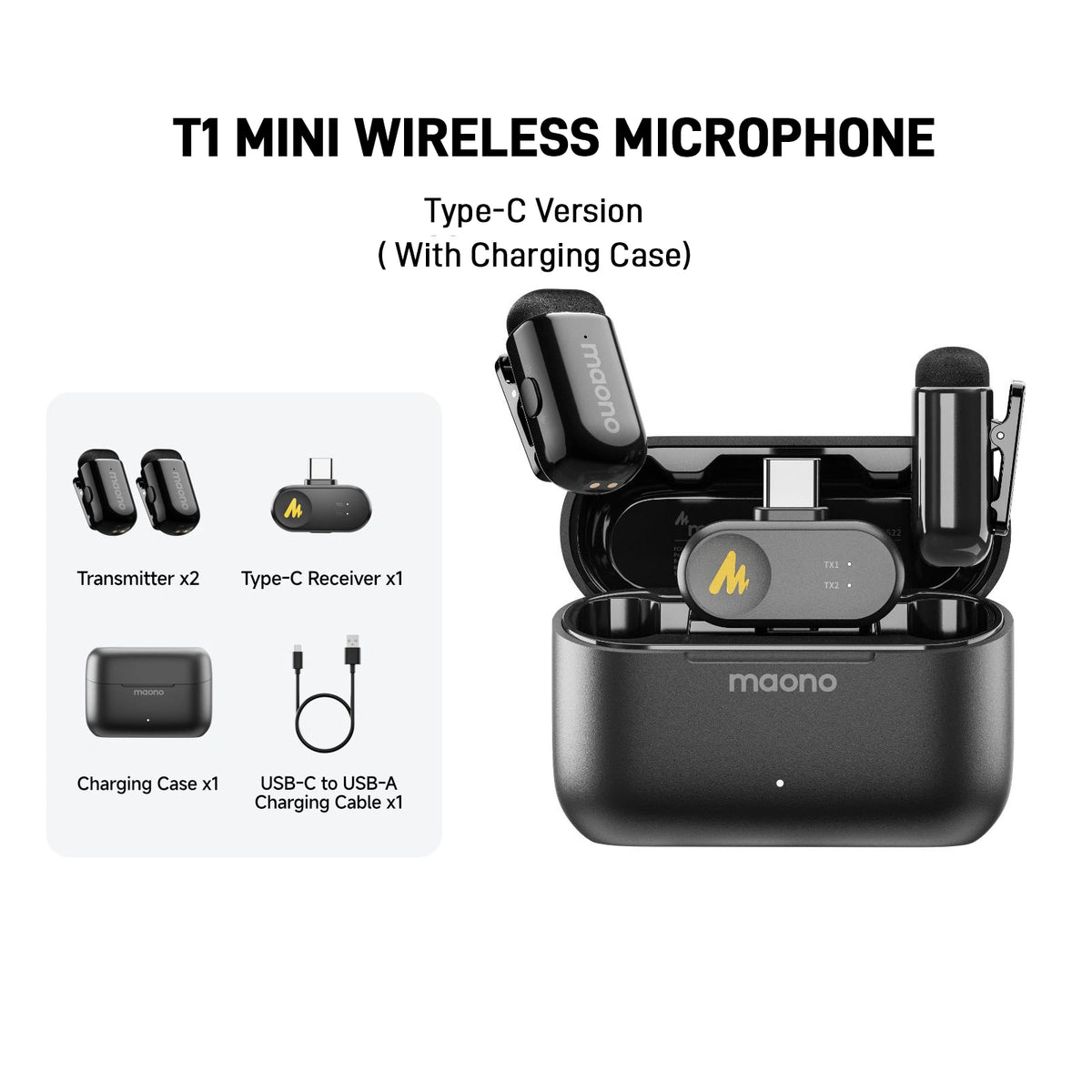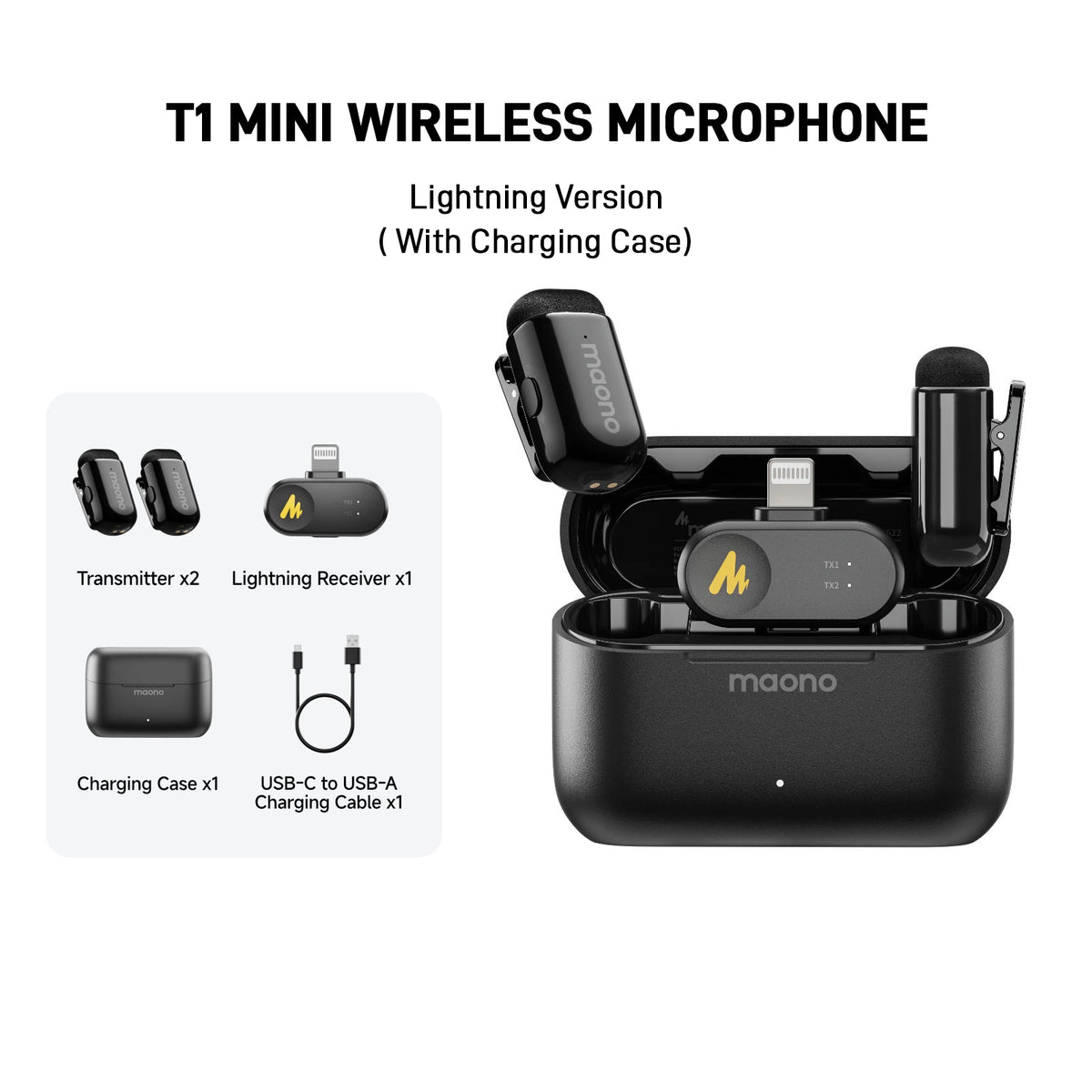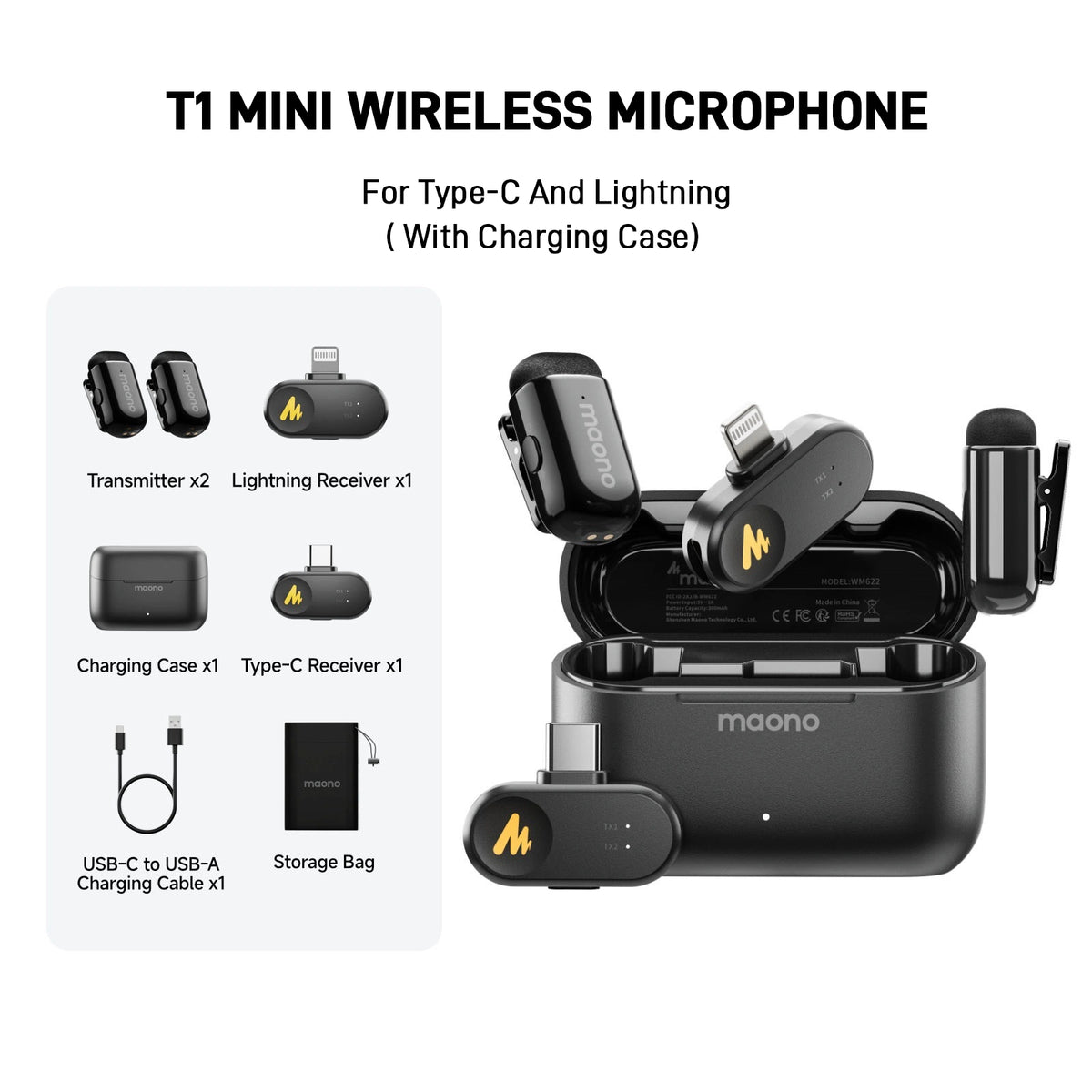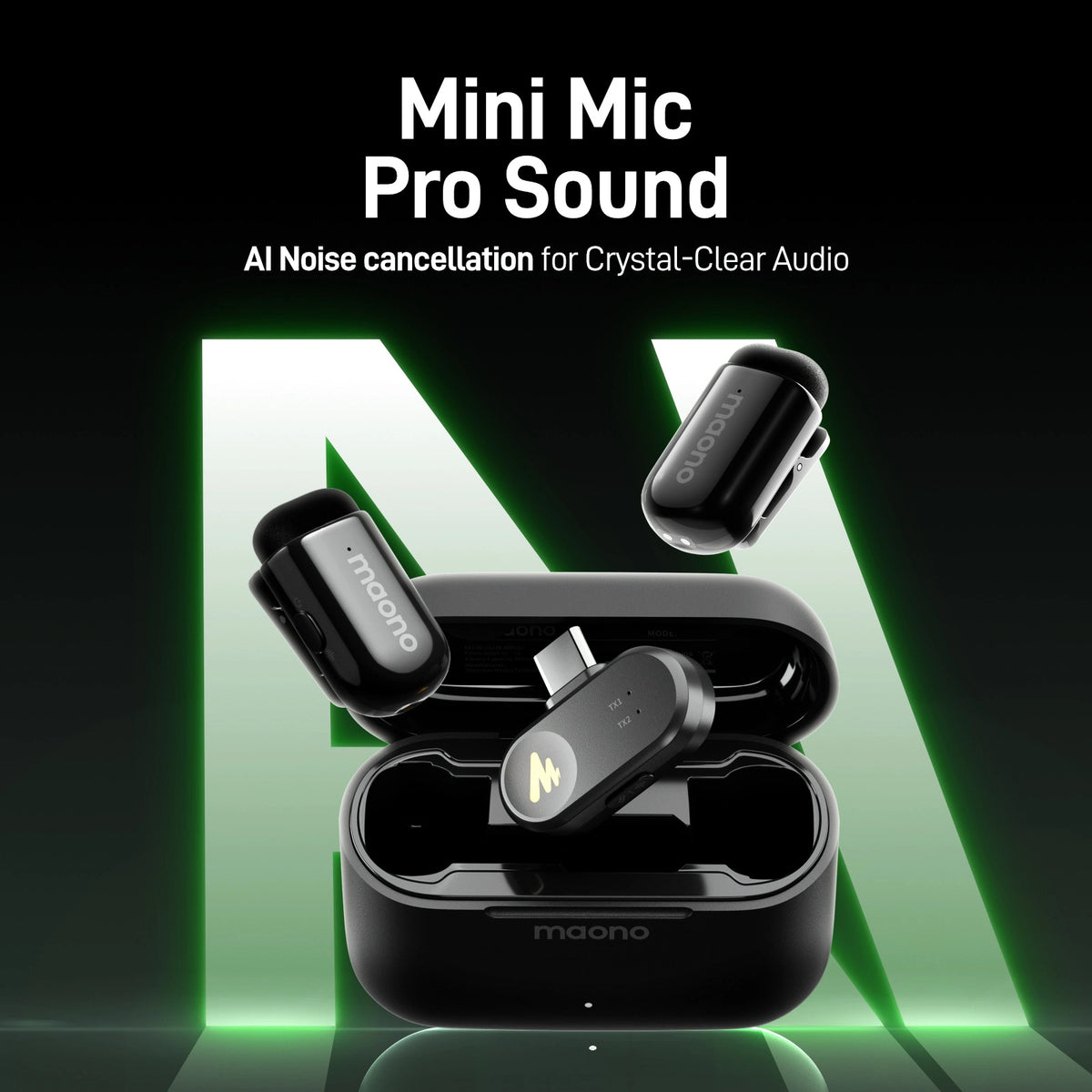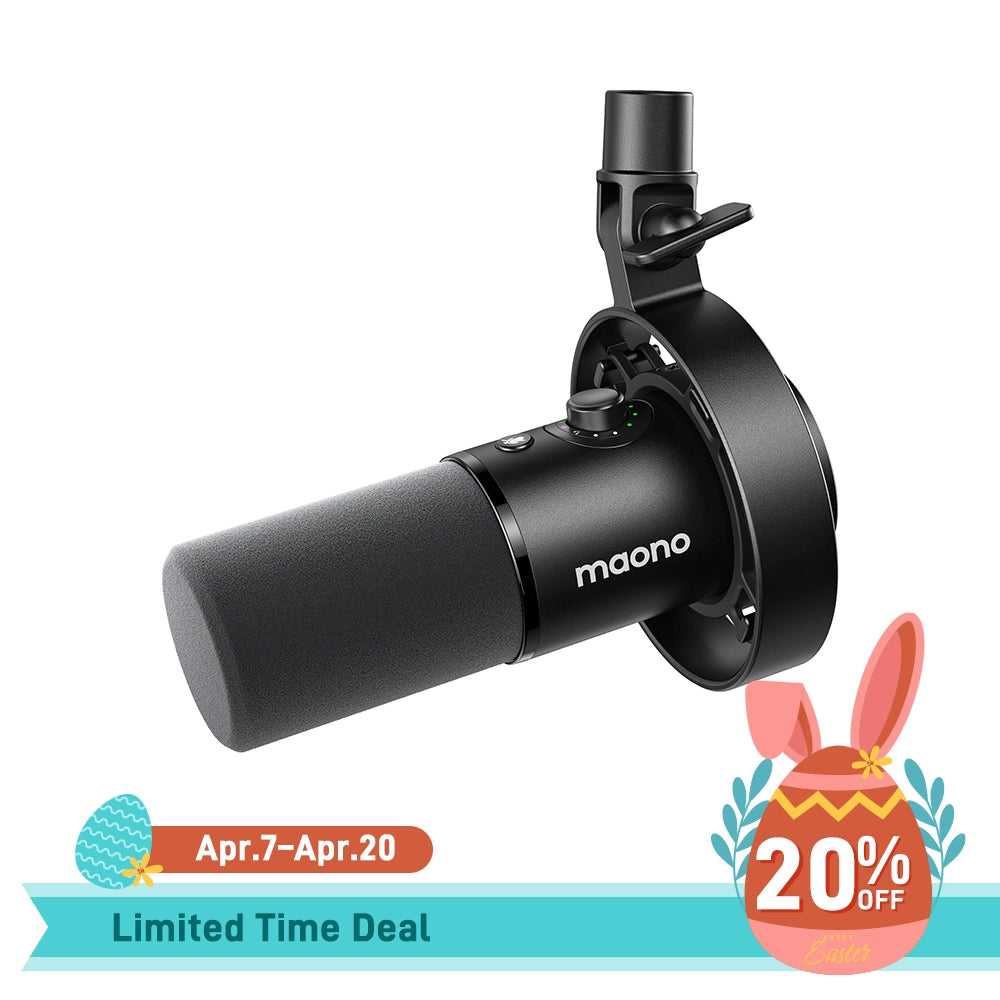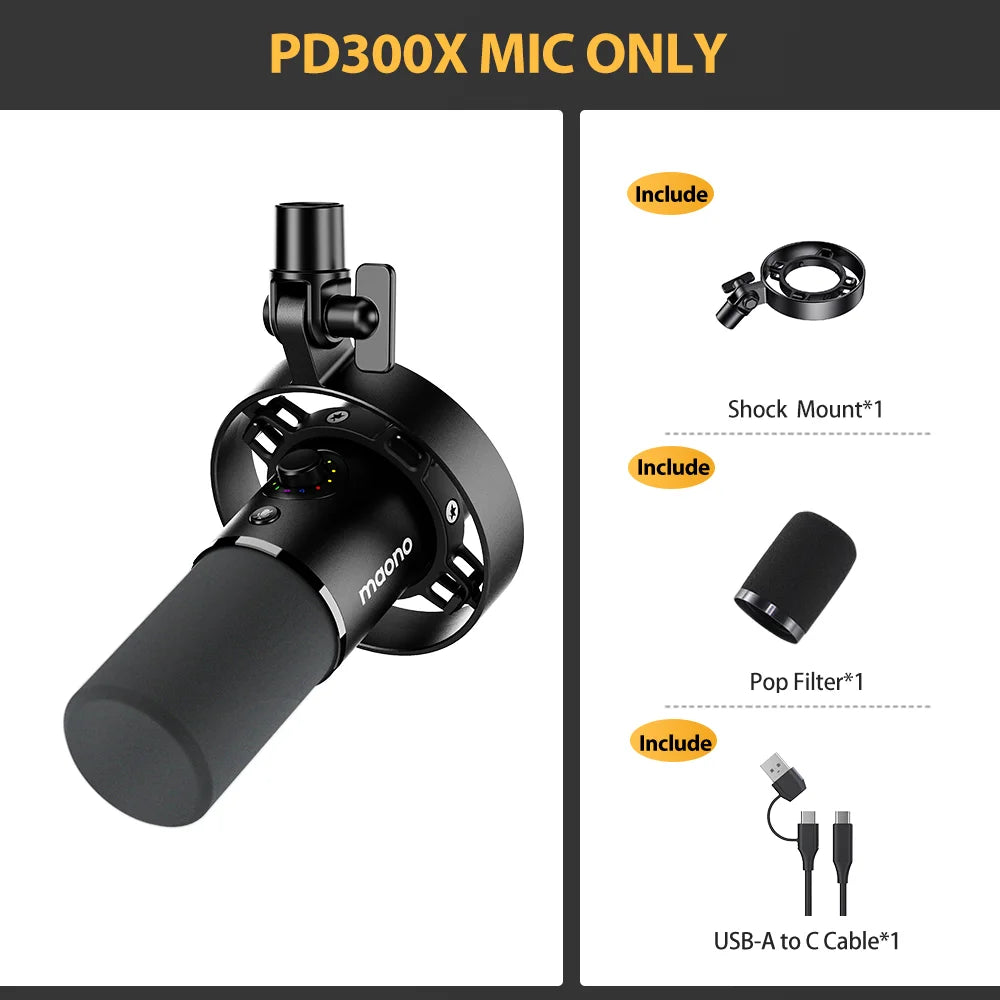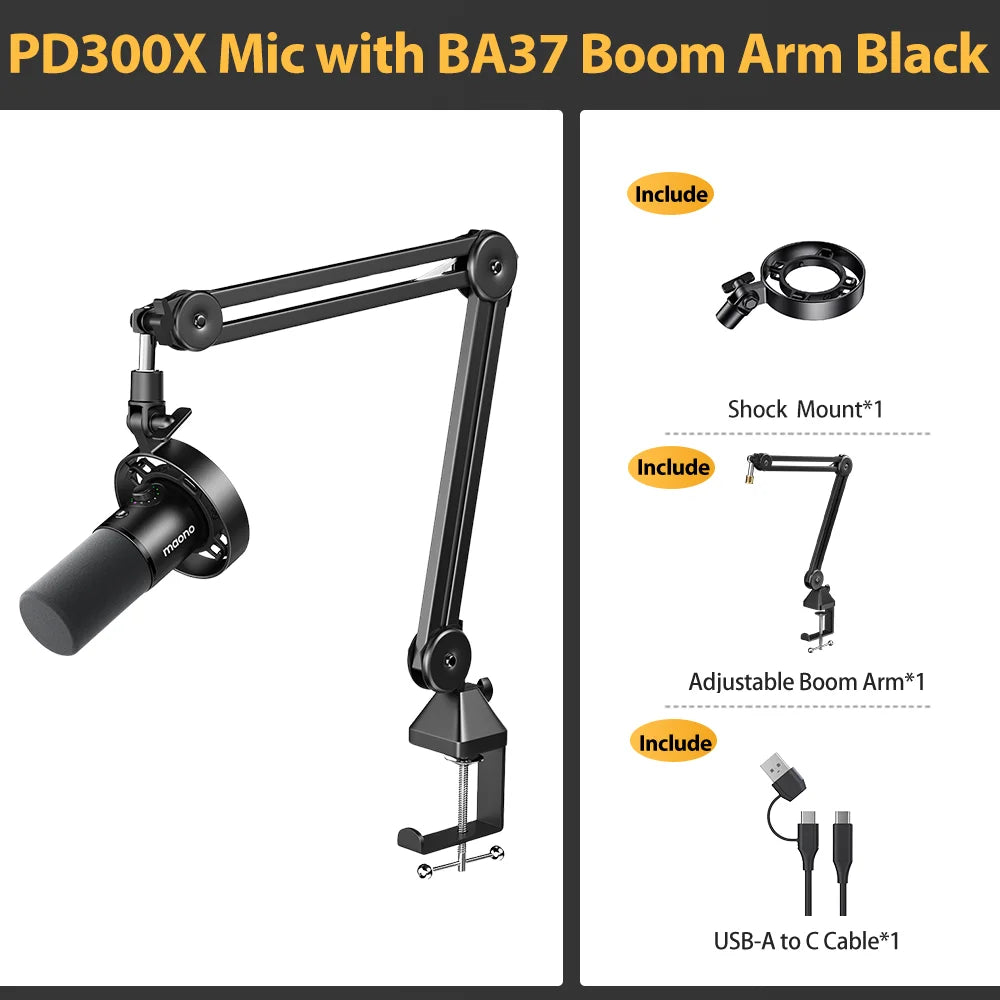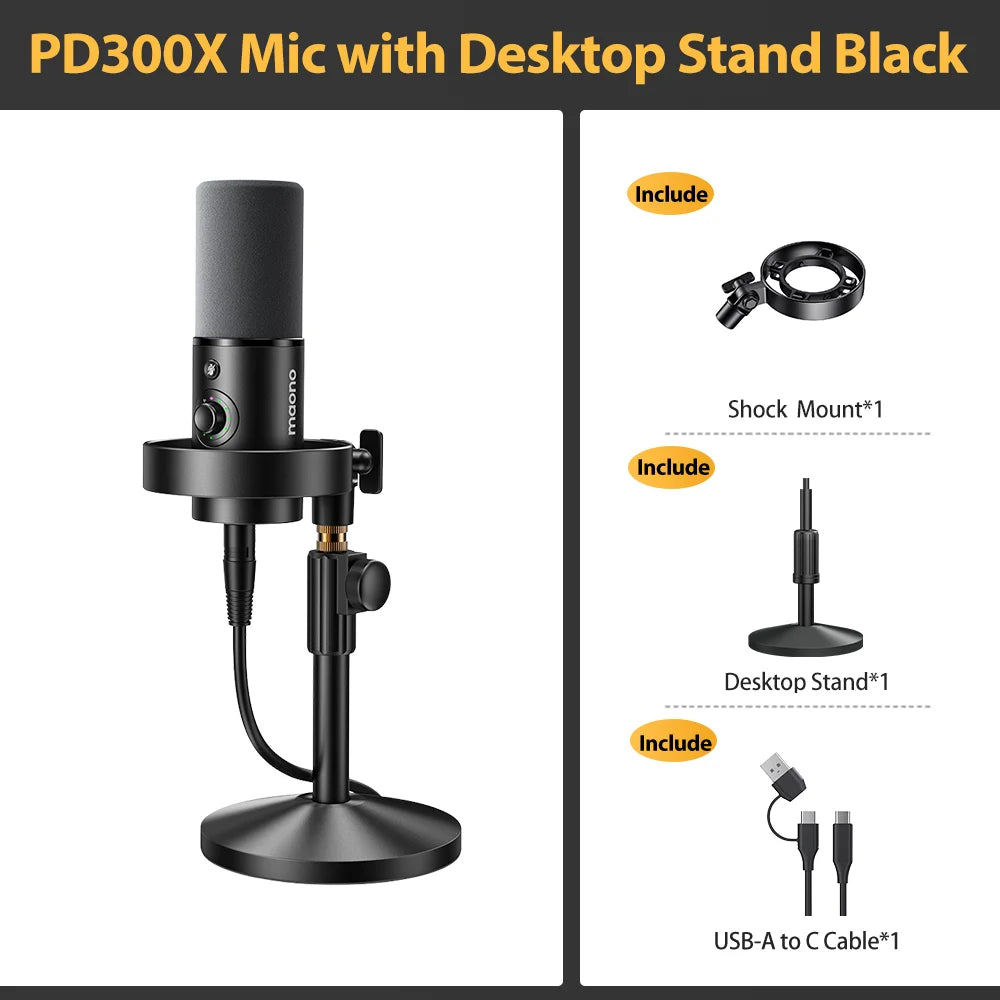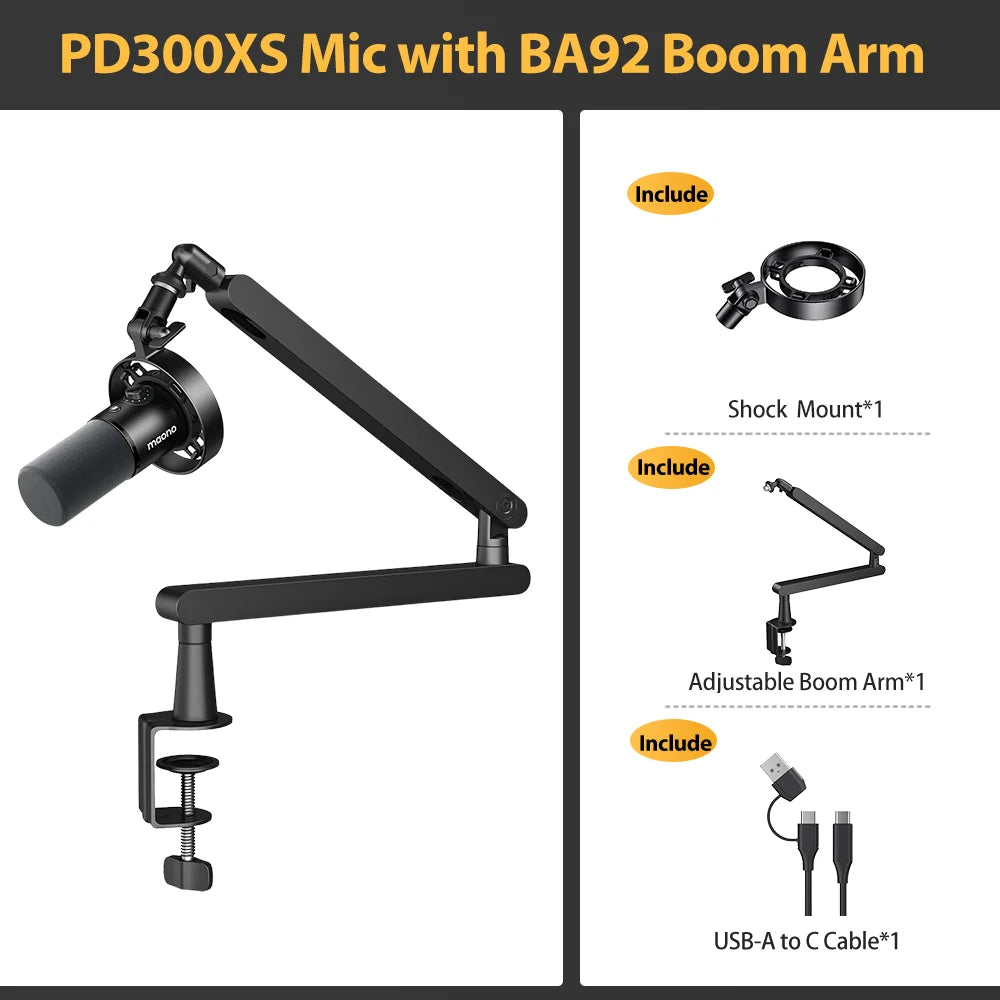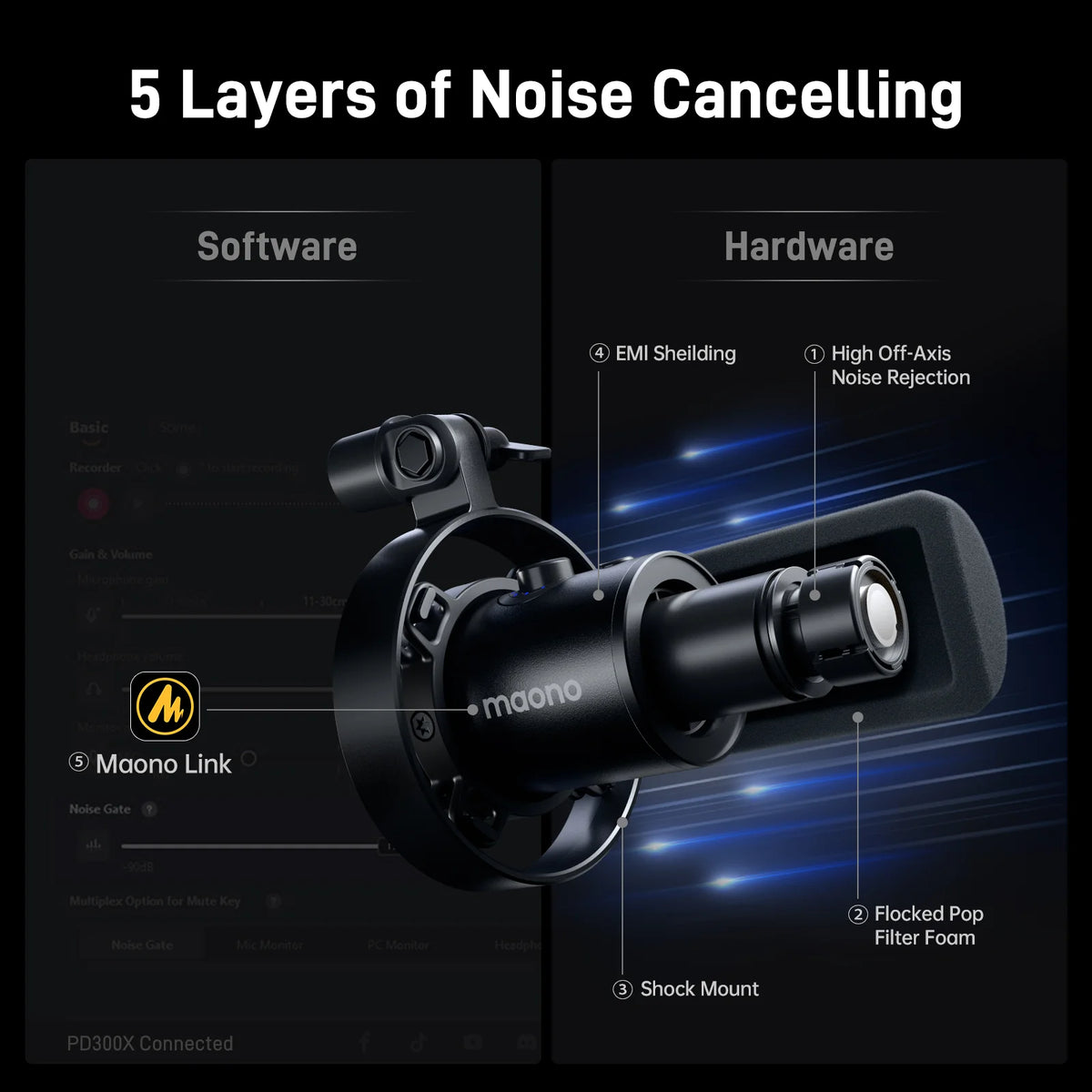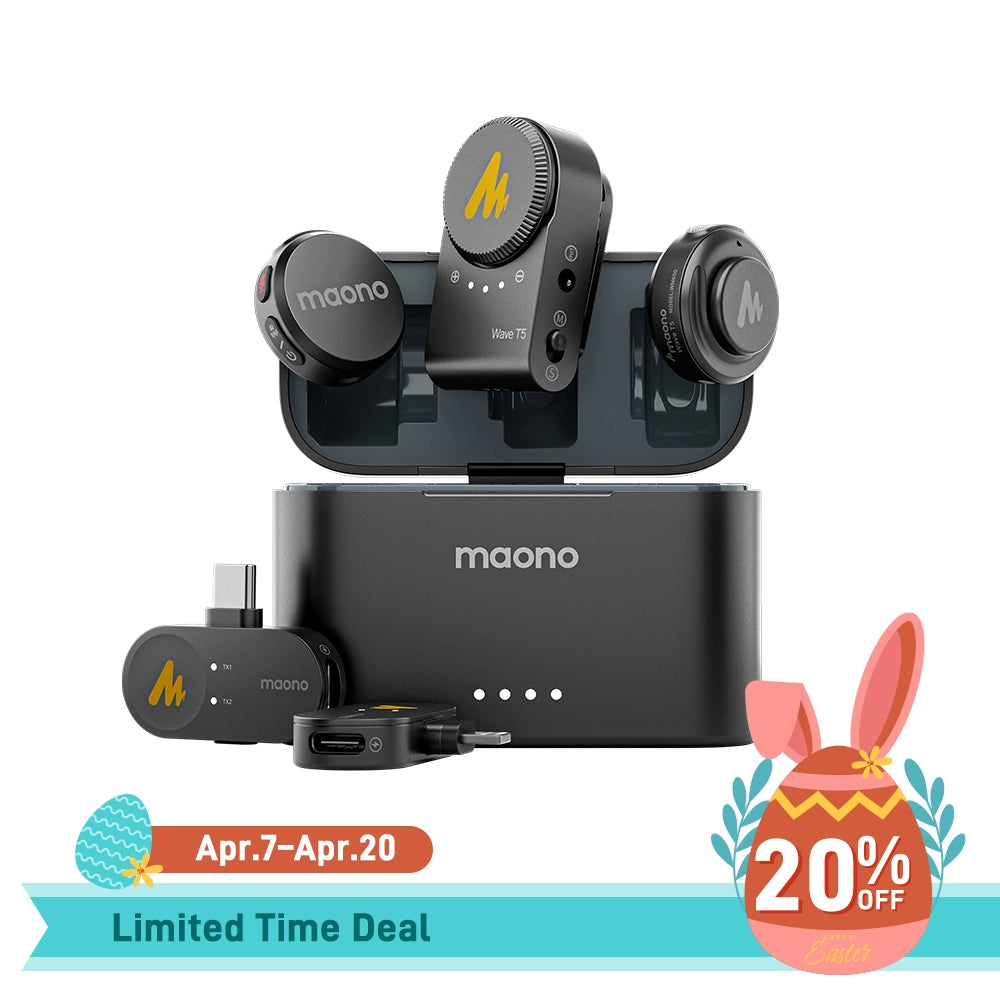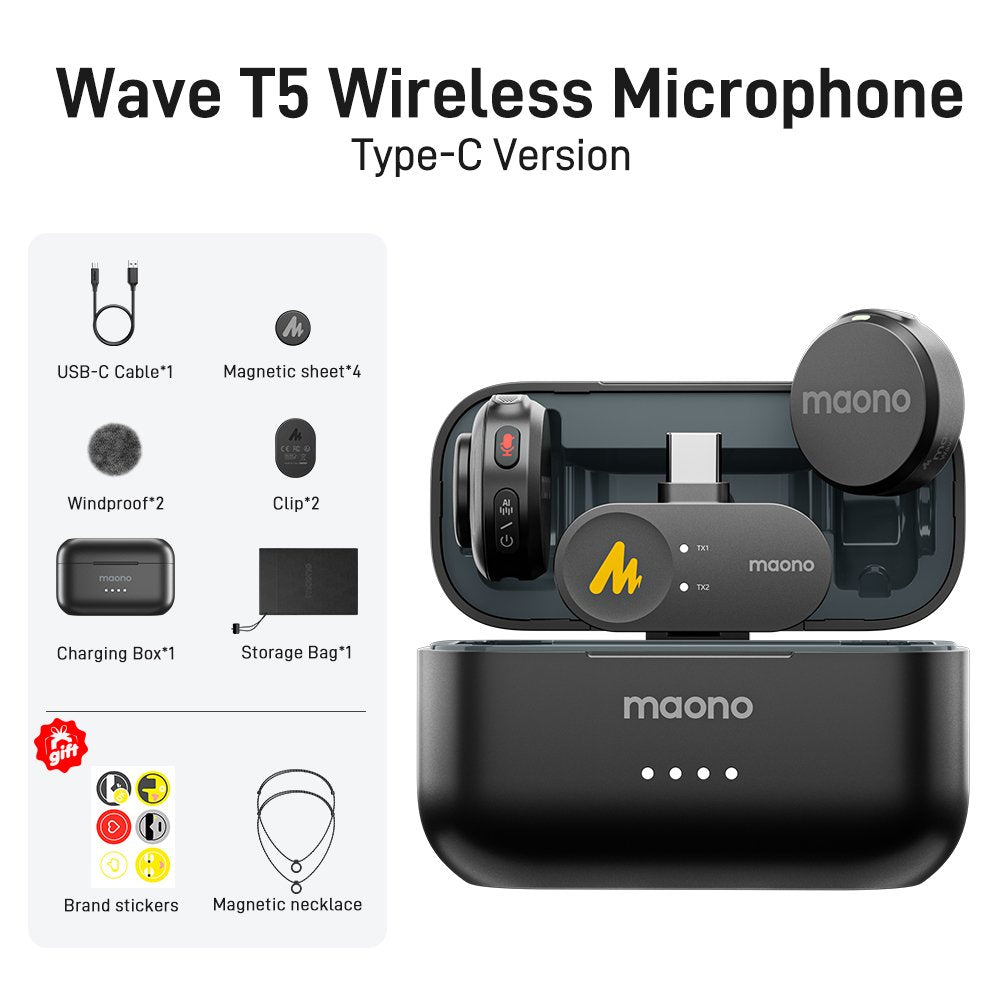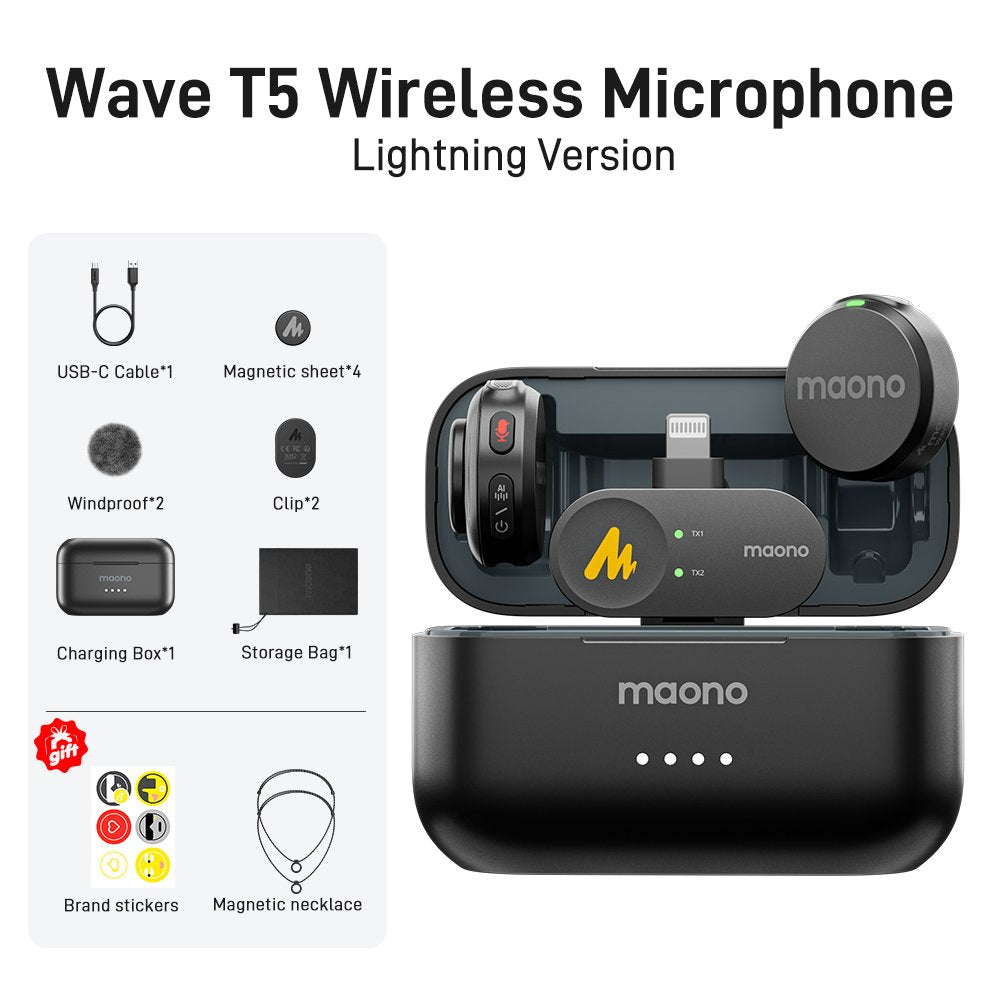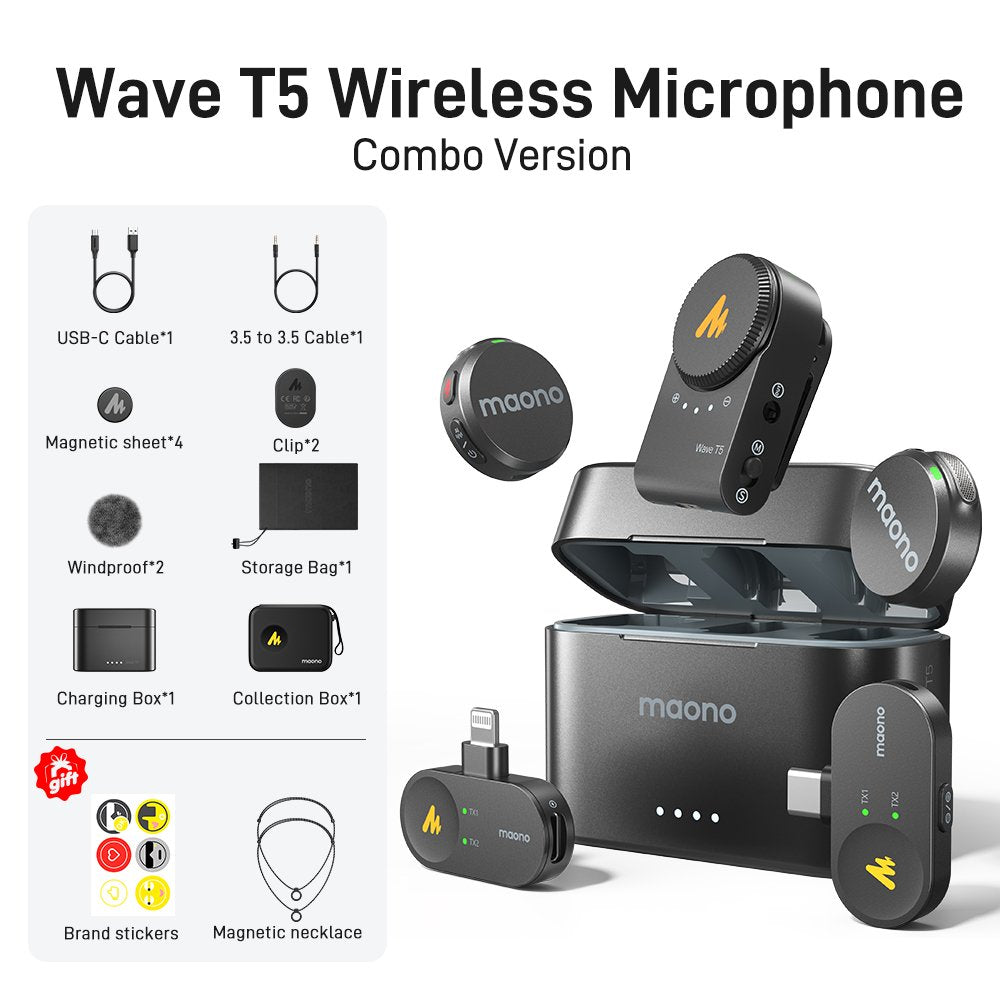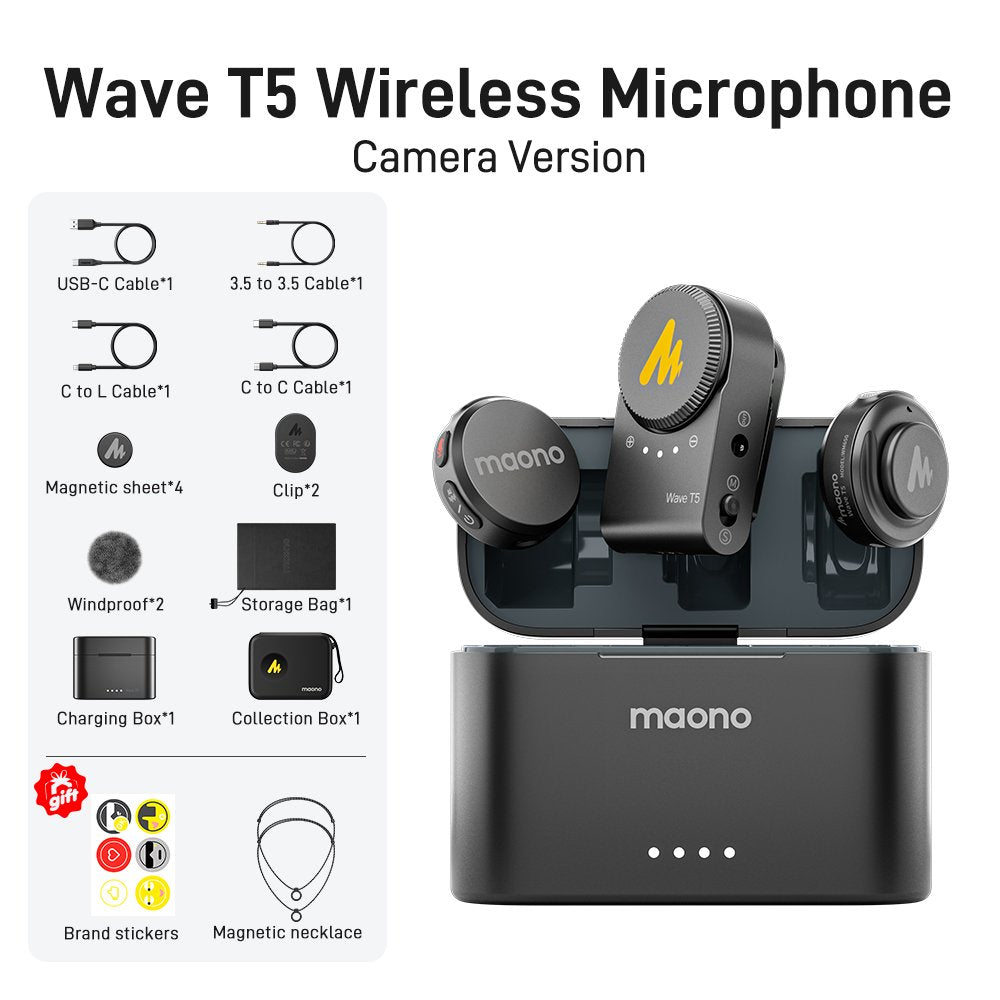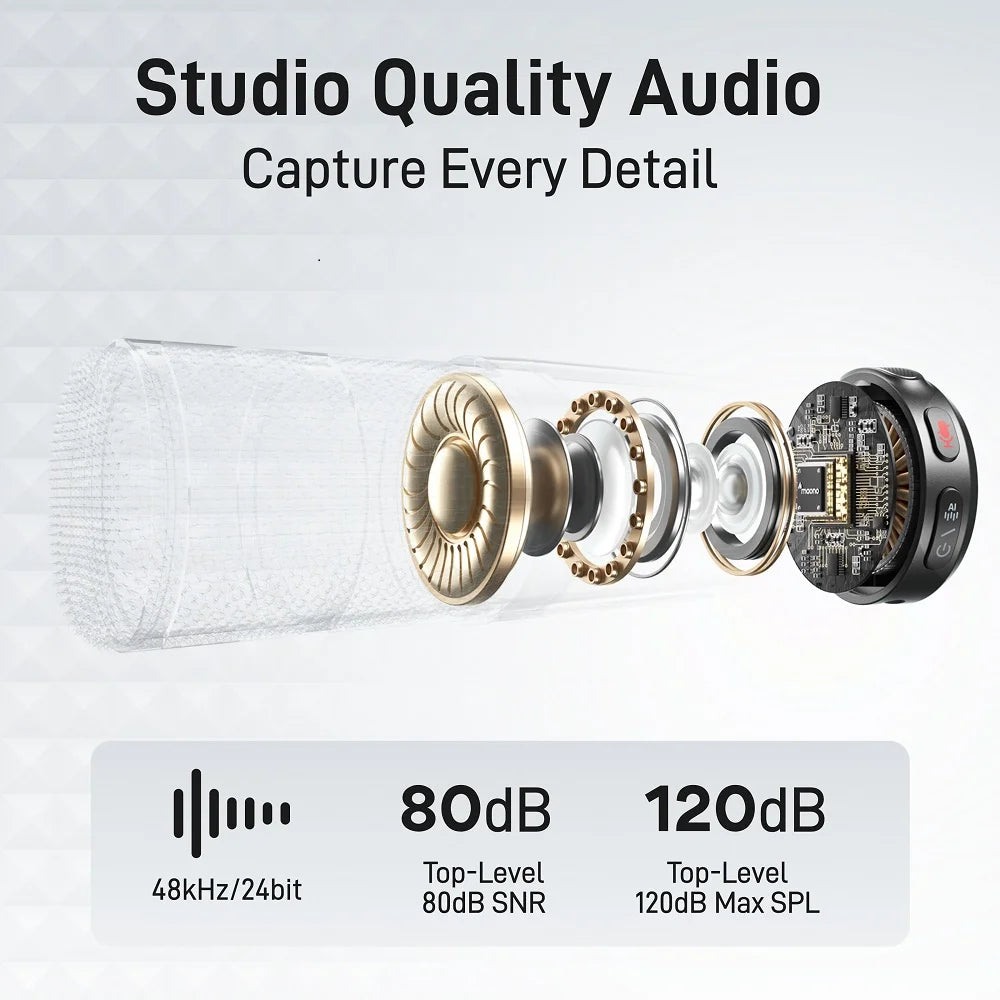All you need is your phone to start a podcast--for FREE! As a beginner, you can use your phone as a mic, but the audio isn't that excellent compared to using a podcast microphone. A headset with a mic is a good alternative too but if you plan to use your headset for longer hours, it might cause you uncomfort, ear pain, or even hearing problems in the long run. A USB mic is a great alternative when recording audio for your podcast, but if you want to elevate how you want to sound, and plan to add tools on your setup life and audio interface to customize your sound effects, you can use an XLR podcast microphone.
Usually, XLR microphones are expensive, but when Maono launched their internet microphones--you will understand that XLR podcast mics need not break the bank. As for starters, remember that when creating a podcast, the audio is always a priority. So, investing in the best podcast microphone that's high-quality and gives a professional sound for an affordable price--that's what you need and definitely looking for. Our recommendation: The Maono PD100 and the Maono PM320.
Podcasting has never been more accessible. Gone are the days when you needed a soundproof studio, a high-end microphone, or complex editing software on a computer to produce great audio content. Today, if you’ve got a smartphone in your pocket, you already have the most powerful tool to start your podcasting journey. Whether you're commuting, traveling, or simply working from your bedroom, your phone can handle the entire process—from recording and editing to publishing your podcast to the world.
In this guide, we’ll show you how to record and launch your podcast using just your phone, with top tips, app recommendations, editing advice, and even the best podcasting microphone to level up your sound like a pro.
Tips for Creating a Good Podcast: The "Secret Sauce"
Before diving into tech, let’s talk about content. Even with the best apps and mics, a podcast won’t shine without good structure and delivery. Here are the core elements—the "sauce"—that help create an engaging podcast episode:
1. Hook with a Strong Intro
Your introduction sets the tone. Introduce yourself and your podcast’s purpose clearly and with energy. Use music or a branded jingle to add polish and consistency.
2. Deliver Valuable Content
Get to the point quickly and focus on what your audience came for. Use a conversational tone, and don’t be afraid to share personal anecdotes or bring on interesting guests.
3. Include a Clear Call to Action
Encourage listeners to subscribe, leave a review, follow your social media, or check out your website. A consistent CTA helps grow your community.
Keep episodes structured but flexible—plan your outline but leave space for natural conversation and spontaneity.
Best Apps to Record a Podcast on Your Phone
A number of mobile apps make it easy to record professional-quality audio right on your phone. Here are some top choices:
1. Anchor (by Spotify)
-
Free and beginner-friendly
-
Built-in recording and editing tools
-
Direct publishing to Spotify, Apple Podcasts, and more
-
Great for solo episodes or remote interviews
2. Spreaker Studio
-
Live podcast recording with sound effects
-
Multitrack editing capabilities
-
Easy distribution tools and analytics
3. Podbean
-
Simple recording interface
-
Hosting and monetization tools
-
Great for podcasters who want all-in-one functionality
If you're using a podcast microphone for iPhone or Android, many of these apps allow you to record high-quality audio without needing external recorders or software.
How to Record a Podcast Using the Ferrite Recording Studio App
One standout app for iOS users is Ferrite Recording Studio. It blends the simplicity of a voice recorder with the power of professional editing tools—ideal for podcasters who want to polish their sound without a computer.
Getting Started:
-
Download Ferrite from the App Store.
-
Open the app and tap the microphone icon to start recording.
-
Record your episode, either in one take or in multiple segments.
-
Once recorded, use Ferrite’s multitrack editor to cut, trim, and rearrange sections.
-
Add music, fade-ins, or sound effects for a more professional touch.
Ferrite is compatible with external mics, so if you’ve got a microphone for podcasting, you’ll get even better sound straight from your phone.
Mobile Podcast Editing Apps You Should Know
Editing is key to making your podcast sound crisp and professional. Here are top editing apps you can use right on your phone:
1. GarageBand (iOS)
-
Great for editing music and voice
-
Add sound effects, intros/outros
-
Ideal for beginners and free
2. Hokusai Audio Editor (iOS)
-
User-friendly interface
-
Trim, fade, and filter tools
-
Great for on-the-go audio touch-ups
3. WaveEditor (Android)
-
Full-featured audio editor
-
Supports multiple file formats
-
Includes EQ, filters, and waveform editing
Pairing one of these apps with the best podcasting microphone can significantly improve your audio editing and final output, even on a mobile setup. Each app has different strengths, so test a couple and see which one fits your workflow best.
Spotify vs. YouTube: Choosing the Right Platform
As a beginner, one thing that comes to your mind is: Which is the platform to choose that’s free? When it comes to sharing your podcast, two of the biggest platforms are Spotify and YouTube—but which one should you focus on?
Spotify
-
Dedicated to audio content
-
Reaches a podcast-savvy audience
-
Works with platforms like Anchor for easy submission
-
Offers monetization options for creators
YouTube
-
Great for visual content and discoverability
-
Allows you to turn audio into videos (with static or dynamic visuals)
-
Huge audience and better SEO potential
-
Ideal if you plan to grow a personal brand
Best Approach: Don’t limit yourself! Record with the intention to publish on multiple platforms. You can use Spotify for audio-first listeners and YouTube to reach new fans visually. The right podcasting microphone setup ensures your audio quality stays high regardless of where it’s published.
Can I Submit a Podcast to Spotify for Free?
Yes! Submitting your podcast to Spotify is absolutely free.
If you're using apps like Anchor, the process is automated. Once your show is uploaded and published, it gets distributed to Spotify and other major platforms with no extra steps.
If you're using a separate podcast host (like Podbean, Buzzsprout, or Spreaker), you can submit your podcast RSS feed to Spotify manually by visiting Spotify for Podcasters. It’s quick, free, and allows you to track analytics and audience growth—essential tools for any podcaster with a serious microphone setup for podcasting.
Best Budget Microphones for Podcasting with a Phone
While smartphones have decent built-in mics, using an external microphone significantly improves your sound quality—especially if you want to sound professional.
Maono PD100
-
Type: Dynamic microphone
-
Connectivity: XLR (can be used with an audio interface)
-
Notable Features:
-
Cardioid polar pattern for focused voice pickup
-
Delivers clear and detailed sound for clean recording
-
Rugged and stylish build
-
Why It’s Great: The PD100 is excellent for mobile setups when paired with a portable interface like the Maonocaster AME2 or a AMC2 and other new models of Maono audio interfaces. It reduces background noise and gives your voice a rich, full tone. It's considered a best podcasting microphone choice for beginners and budget creators alike.
Maono PM320
-
Type: Condenser microphone
-
Connectivity: XLR
-
Notable Features:
-
Wide frequency response for clarity and detail
-
Sturdy metal shock mount, pop filter, and windscreen included
-
Great sensitivity for voice nuances
-
Why It’s Great: If you’re recording in a quiet room, the PM320 offers studio-quality sound without breaking the bank. It’s ideal for interviews, solo shows, and narrative podcasts. As a podcast microphone for iPhone or Android (with the right adapter), this mic helps you podcast like a pro on the go.
Note: To connect these mics to your phone, you may need a compatible USB interface or an XLR-to-USB adapter with mobile support. These mics easily integrate into your podcasting microphone setup, ensuring a more professional production even if you're working entirely from your smartphone.
Final Thoughts: You Can Podcast Like a Pro from Your Phone
Starting a podcast doesn’t require fancy studio gear or complicated software anymore. With the right apps, smart content planning, and maybe a budget-friendly mic like the Maono PD100 or PM320, your phone becomes a full production studio in your hand.
Whether you want to share stories, educate, entertain, or build a brand, podcasting is one of the most powerful and personal formats available—and you already have what you need to begin.
Invest in a good microphone setup for podcasting, choose the right app, and record your episodes confidently—wherever inspiration strikes.
So grab your phone, hit record, and start sharing your voice with the world. Your podcast journey starts now—no excuses, no limits.


